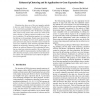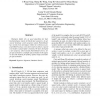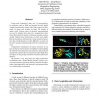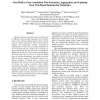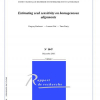110
Voted
BIBE
2004
IEEE
15 years 4 months ago
2004
IEEE
Phylogenetic reconstruction from gene-order data has attracted attention from both biologists and computer scientists over the last few years. So far, our software suite GRAPPA is...
BIBE
2004
IEEE
15 years 4 months ago
2004
IEEE
Clustering has been one of the most popular methods to discover useful biological insights from DNA microarray. An interesting paradigm is simultaneous clustering of both genes an...
87
Voted
BIBE
2004
IEEE
15 years 4 months ago
2004
IEEE
Current motif discovery methods can only detect individual motifs in groups of protein sequences--they do not discover potentially-interacting motif pairs underlying the interacti...
99
Voted
BIBE
2004
IEEE
15 years 4 months ago
2004
IEEE
In microarray gene expression data, clusters may hide in subspaces. Traditional clustering algorithms that make use of similarity measurements in the full input space may fail to ...
93
Voted
BIBE
2004
IEEE
15 years 4 months ago
2004
IEEE
Biologists highly rely on good algorithms for finding homologous regions in bimolecular sequences. An advanced homology search program named PatternHunter has recently been develo...
116
Voted
BIBE
2004
IEEE
15 years 4 months ago
2004
IEEE
Large-scale biomedical data sets of macromolecular structures such as DNA and proteins describe highly complex biomolecular entities which often consist of thousands of atoms and ...
116
Voted
BIBE
2004
IEEE
15 years 4 months ago
2004
IEEE
Numerous genomic annotations are currently stored in different web-accessible databanks that scientists need to mine with user-defined queries and in a batch mode to orderly integ...
129
click to vote
BIBE
2004
IEEE
15 years 4 months ago
2004
IEEE
As the capture and analysis of single-time-point microarray expression data becomes routine, investigators are turning to time-series expression data to investigate complex gene r...
111
Voted
BIBE
2004
IEEE
15 years 4 months ago
2004
IEEE
There is a recognized need for a meta-classification that can serve as a foundation for more refined ontologies in the field of proteomics. Standard data sources classify proteins...
79
Voted
BIBE
2004
IEEE
15 years 4 months ago
2004
IEEE

